Marketing Trends
As influencer marketing continues to gain traction, staying abreast of current trends is critical for marketers aiming to optimize their strategies. Recent statistics indicate a marked shift in how brands approach their influencer partnerships, particularly in light of evolving economic dynamics. According to a comprehensive survey conducted in 2023, a staggering 68% of marketers plan to increase their budgets for influencer marketing activities in 2025, in contrast to previous years when budgets were more conservative.
This trend can be attributed to a growing recognition of the effectiveness of influencer marketing in generating measurable return on investment (ROI). Marketers are increasingly prioritizing influencer collaborations as a means to enhance brand visibility and build authentic relationships with target audiences. Moreover, the emergence of diverse platforms has prompted brands to explore various types of influencer partnerships, ranging from mega to micro-influencers, thereby tailoring their strategies to maximize engagement and impact.
Notably, the economic landscape has also played a pivotal role in shaping influencer marketing strategies. With inflation and changing consumer behavior, brands are more cautious about where they allocate their marketing budgets. Influencer marketing has proved to be a cost-effective option that delivers measurable results, making it an attractive choice for brands looking to navigate the competitive market terrain. This inclination towards investing in influencers demonstrates marketers’ adaptability in responding to current economic pressures.
Surveys reveal that more than 60% of marketers express concerns regarding the effectiveness of their investments in influencer programs, emphasizing the critical need for clear metrics and ROI measurement. As the influencer marketing landscape evolves, it is essential for marketers to refine their strategies, ensuring they align with emerging trends while addressing the overarching need for accountability in their marketing initiatives.

The Decrease in Budgets: Causes and Implications
The landscape of influencer marketing is witnessing a significant shift, evidenced by a reported 10% decrease in budgets allocated for such campaigns in 2025. This downturn can largely be attributed to a combination of economic uncertainties, shifting consumer behaviors, and an increasing focus on the return on investment (ROI) associated with these marketing initiatives. Understanding these factors is critical for brands looking to navigate the evolving market effectively.
Firstly, economic uncertainties present a major challenge. As inflation rates rise and markets become volatile, companies often reassess their spending strategies to ensure fiscal responsibility. In anticipation of potential downturns, many brands are opting to reallocate budget towards more traditional, quantifiable marketing methods, thereby diminishing the financial resources directed towards influencer partnerships. This cautious approach reflects a broader trend where brands prioritize immediate financial returns over experimental or less predictable influencer-driven campaigns.
Secondly, consumer behaviors are rapidly changing. The increasing demand for authenticity in social media has led consumers to become more discerning about sponsored content. As audiences seek genuine engagement, brands may find it difficult to justify significant influencer marketing expenses when the outcomes are less predictable. Consequently, companies may feel the need to tighten their budgets, focusing on either a select few high-impact influencers or entirely different marketing channels that resonate more with the current audience.
Moreover, the heightened scrutiny on ROI is compelling marketers to adopt a more analytical stance towards influencer collaborations. Brands are examining the effectiveness of their marketing expenditures meticulously, evaluating which strategies yield the best results. This transition towards data-driven decision-making encourages skepticism towards influencer marketing campaigns, further prompting budget cuts.
In light of these causes, the implications for influencer marketing strategies become clear. Brands must adapt by developing more sustainable, accountable, and transparent collaborations with influencers, ensuring that every investment serves a determined purpose and aligns closely with consumer expectations.
Shifting Focus: From Tactics to Strategy
Influencer marketing has witnessed a significant evolution over the past few years, growing from a tactical approach focused on one-off campaigns to a fundamental element of comprehensive marketing strategies. This shift has arisen from a deeper understanding of consumer behavior and a recognition of the powerful role influencers play in shaping brand perception and driving purchasing decisions. Rather than being viewed merely as a tool for isolated promotions, influencers are now integrated into the broader cognitive landscape of brands, enhancing engagement and fostering community.
To effectively incorporate influencer marketing into a long-term strategy, brands must first identify their core objectives. Whether the goal is to increase brand awareness, enhance customer loyalty, or drive sales, these objectives will guide the influencer selection process. Choosing the right influencers, whose audience aligns with the brand’s target demographic, is essential for maximizing impact. This strategic alignment not only enhances authenticity but also fosters meaningful connections between the brand and potential customers.
Moreover, brands are now focusing on building relationships with influencers rather than simply transactional engagements. This shift allows for more authentic collaborations, which can lead to enduring brand relationships, further enhancing trust and loyalty among consumers. By involving influencers in product development or brand storytelling, companies can leverage their unique insights and creativity, further aligning marketing efforts with consumer preferences and industry trends.
Additionally, the rise of data analytics has allowed brands to measure the effectiveness of their influencer marketing strategies. By analyzing engagement metrics and return on investment, companies can refine their approaches, ensuring that influencer partnerships continually align with business goals. This data-driven insight is crucial in making informed decisions that elevate influencer marketing from a tactical exercise to a strategic imperative.
Maximizing ROI in Influencer Marketing
Maximizing return on investment (ROI) in influencer marketing is crucial for brands seeking to harness the full potential of their campaigns. A well-structured strategy involves several key practices that can significantly enhance the effectiveness of these collaborations. To begin with, setting clear and measurable objectives is essential. Brands should determine what success looks like, whether it’s increased brand awareness, engagement, or conversions. A well-defined goal enables better alignment between the brand’s vision and the influencer’s audience, leading to more effective campaigns.
Another important aspect of maximizing ROI is selecting the right influencers. Brands must look for individuals whose values and content are in sync with their own. This alignment ensures authenticity in communication, which resonates better with audiences. An influencer’s demographics and follower engagement levels should also be considered, as these factors greatly influence the reach and impact of marketing messages. A targeted approach to influencer selection enhances the likelihood of reaching the desired customer base and achieving marketing goals.
Measuring the effectiveness of influencer campaigns is equally vital in maximizing ROI. Utilizing analytics tools to track engagement metrics, such as likes, shares, and comments, provides insight into how the audience interacts with the content. Additionally, brands should monitor conversions and track sales generated from influencer partnerships, offering a clear indication of financial impact. This data not only demonstrates the success of respective campaigns but also informs future strategies by identifying what works best.
Ultimately, the journey to maximizing ROI in influencer marketing requires a strategic approach that includes goal-setting, careful influencer selection, and robust monitoring of campaign effectiveness. By prioritizing these elements, brands can secure successful outcomes and foster long-lasting relationships with their influencer partners, leading to sustained growth and profitability.
Strategies for Successful Partnerships with Influencers
In today’s digital world, influencer marketing has become a vital component for brands seeking to enhance their reach and build credibility. Forming successful partnerships with influencers requires careful consideration and strategic execution. One of the first steps in this process is identifying the right influencers who align with your brand values and target audience. Brands should look for influencers whose content resonates with their desired demographic, as engaging with the wrong influencer may lead to ineffective campaigns.
Once potential influencers are identified, it is essential to establish mutually beneficial agreements. This includes outlining clear expectations regarding the scope of work, deliverables, and compensation. Transparency in these agreements fosters trust and ensures that both parties understand their roles in the partnership. A well-structured agreement can also serve to protect the interests of both brands and influencers, enhancing the overall effectiveness of the collaboration.
Moreover, fostering genuine relationships with influencers is crucial to achieving ongoing success. Rather than approaching partnerships solely as transactional engagements, brands should aim to build long-term connections with influencers. This can be achieved through open communication, providing influencers with creative freedom, and showing appreciation for their efforts. By encouraging a collaborative environment, brands can cultivate authenticity in marketing messages, which ultimately resonates more profoundly with audiences.
Another effective strategy involves leveraging data and insights to measure the impact of influencer partnerships. Analyzing key performance indicators can help brands gauge the success of their collaborations and make informed decisions about future partnerships. Utilizing social media analytics, engagement rates, and audience feedback will enable brands to refine their influencer strategies continuously. Through these considerations, brands can establish a solid framework for successful influencer partnerships that drive meaningful results.
Emerging Platforms and Influencer Types
The landscape of influencer marketing is continually evolving, driven by the advent of new digital platforms and a diverse range of influencer types. With a growing emphasis on authenticity and engagement, brands are increasingly exploring these emerging platforms to maximize their reach and impact. Social media platforms such as TikTok and Snapchat have gained significant traction, particularly among younger audiences. These platforms primarily focus on short, engaging content, which enhances a brand’s ability to connect with users in a more personal and dynamic manner.
Alongside these platforms, the types of influencers present another crucial aspect of this evolution. While traditional celebrities still hold sway, there has been a notable shift towards collaborating with micro and nano influencers. These influencers, typically defined as those with fewer than 100,000 followers, often boast higher engagement rates and more niche audiences. They can effectively tap into specific demographics, allowing brands to reach targeted customer segments and foster a deeper connection.
Micro and nano influencers often cultivate a sense of community with their followers, which adds an element of trust that is increasingly valuable in today’s marketing climate. Brands that adapt their strategies to incorporate these influencers are likely to benefit from heightened authenticity in their campaigns. Collaborating with a variety of influencers enables brands to diversify their outreach strategies and respond to current consumer preferences more adeptly.
In recognition of this shifting dynamic, brands must remain nimble and innovative. This includes experimenting with various influencer types across multiple platforms, ensuring that their marketing strategies evolve in tandem with changing consumer behaviors and technology. By embracing these emerging trends, brands can create impactful influencer marketing campaigns that resonate with diverse audiences and enhance overall brand loyalty.
Preparing for the Future of Influencer Marketing
The landscape of influencer marketing is continually shifting, driven by emerging trends and consumer preferences. To remain competitive, brands and marketers must prioritize continuous learning and adaptation. Staying informed about new platforms, evolving social media algorithms, and changing audience behavior is vital for effective engagement. By fostering a culture of learning, organizations can devise innovative strategies that resonate with their target demographics. Regularly attending industry conferences, subscribing to relevant publications, and participating in online forums can significantly enhance one’s understanding of the influencer marketing ecosystem.
Investing in technology for analytics and insights is another critical factor that can influence a brand’s success in the influencer marketing realm. Advanced analytics tools enable marketers to measure the performance of campaigns accurately, allowing brands to identify which influencers drive the most engagement and conversion. Understanding metrics such as reach, engagement rates, and return on investment helps marketers make data-driven decisions. Furthermore, leveraging AI and machine learning can refine influencer selection processes and optimize campaign strategies by predicting audience responses and trends.
Transparency and authenticity in partnerships are paramount for fostering long-term success in influencer marketing. Consumers are increasingly scrutinizing brand collaborations, so it is essential that influencers and brands maintain honesty about their relationships. This means clearly disclosing sponsorships and maintaining a genuine alignment in values and messaging. When brands and influencers share transparent partnerships, they build trust with their followers, which can lead to stronger brand loyalty and advocacy. In the future, organizations must prioritize authentic connections with both their audience and influencers if they wish to thrive in an ever-evolving influencer marketing landscape.


